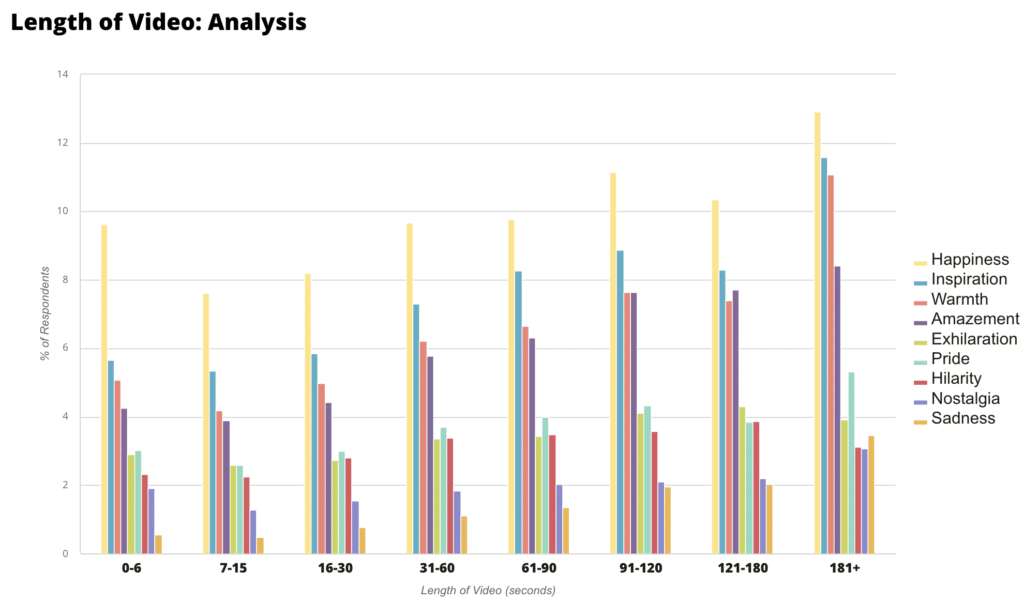Small but mighty: making sense of 6 second video
Phil Townend, our Chief Commercial Officer APAC, speaks about the challenges and opportunities that the 6 second video presents, and how to do it right.
Why 6 seconds?
When YouTube introduced the 6 second video ad in 2016, it was a well-received response to the challenge of placing ads ahead of popular video content. Up until then, the ad industry, with the agility for which it is famous, had doggedly clung to its tried and tested 30-second format and wondered why people ignored or complained about brands intruding on their viewing experience.
The 6 second ad promised to change all that. YouTube’s unskippable new format threw advertisers a lifeline when it came to engaging with the millennial attention span that was fine-tuned to respond to snack sized content. Where YouTube stepped, other social channels and media owners followed. Competitions and festivals celebrated the new 6 second canvas. It was a win-win situation. Wasn’t it?
Not quite. While some lauded ‘the bumper’ as an ad solution for the social era, the sad truth was that cutting a 30, 45 or 60 second ad down to six seconds wasn’t without its challenges. Uninformed non-data driven edits of the full ad without understanding the subtlety in narrative / emotional impact resulted in sometimes noisy, jarring results.
Supporters of the bumper ads argued that this ultra-short form content wasn’t meant to be viewed in isolation. There is a lot of truth to this. Due to their length, bumpers didn’t have the same annoyance factor on repeated viewing, and multiple bumpers from the same campaign created a cascade delivery effect – small snippets of content assimilated by the viewer.
Fortunately, creating 6 second ads can now be informed by studies and data to help you arrive at bumper ads that can make a powerful contribution to your media strategy.
At Unruly we’ve known the power of both narrative and emotions in video for years. Our emotional testing and targeting tools, that are part of UnrulyEQ, help brands and agencies understand the dominant emotions in their ad content, using that same expertise to build out emotional audiences at scale. Outside of the emotional reaction data, we wanted to identify the key drivers of 6 second video success. To do this we collaborated on a new study by San Diego University to rigorously analyse over 3,000 6 second videos.
Long verses short term
The study found that long-form content will always have a role to play. Longer ads are consistently shown to be more effective. They allow more information to be conveyed and chronology and causation to be exhibited, which allows for narrative persuasion. Those all-important emotions which are critical to a successful ad need time to develop.

Viewers are drawn into the story, leading to better recall and bigger attitude changes.
While this suggests the 6 second mobile format faces more challenges, some brands have mastered this format and created very successful short-form ads which convert viewers to buyers. The study looked to identify what drove that success, and understand how it could be replicated.
6 second video requires a narrative rethink
Normal ad and film conventions don’t apply. The best examples employed non-traditional or simplified narrative storytelling, or even a complete absence of narrative storytelling.
Nor does everything need to be spelt out for the viewer. The most successful ads leveraged existing knowledge and culture, such as character archetypes, genres tropes, existing brand associations or characters, and allowed them to infer the information.
Some campaigns proved the idea of using bumpers as building blocks for a larger story, either as a collection of vignettes or as serialised storytelling.
Distribution and targeting are more important than ever
If you’re using non-traditional storytelling, its critical to understand your audience. Messages need to be tailored, and if you’re relying on existing viewer knowledge, it’s critical to know who is seeing your ads. Serialised storytelling requires hyper-targeting or retargeting to ensure your message makes sense to viewers.
We’ve talked a lot about 6 seconds, but similar principles apply to creating 15, or 30-second edits. Unruly’s Short Fix solution, part of our Edit Suite toolkit, can create short-form, mobile-optimised content which captures attention.
The San Diego University findings confirm that 6 second ads can be successful, however advertisers need to think outside the box when it comes to narrative. By identifying the most emotionally impactful moments and using those to tell a story, rather than relying on a traditional beginning, middle and end narrative, advertisers can make the most of their existing assets.
Ignoring these recommendations, and not making data-informed edits can mean your viewers will be left confused instead of engaged. My advice? If you want your bumpers to make a difference, get your edits done by experts who understand emotions.
I’ll end this celebration of emotions and bumpers with a piece of trivia. As much as the 30 second spot dominated TV for 70 years, the first ever TV spot was barely event 10-seconds long. Perhaps brevity is the soul of advertising…
Read the original story in Campaign.
For help and advice on shortening your ads get in touch by clicking here.
